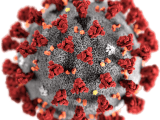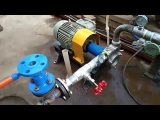Semiconductor industry has been one of the fastest growing industries over the past few decades. Micro and nano bubbles, which are tiny gas bubbles with diameters ranging from a few micrometers to a few nanometers, have found a variety of applications in this industry. In this article, we will explore some of the ways in which micro and nano bubbles are used in the semiconductor industry.
Cleaning of silicon wafers
Silicon wafers are the building blocks of the semiconductor industry. They are used to create integrated circuits, microprocessors, and other electronic devices. However, silicon wafers are often contaminated with various impurities that can affect the quality of the final product. Micro and nano bubbles are used to clean silicon wafers by creating cavitation bubbles that remove impurities from the surface of the wafers. The cavitation process is created by subjecting the wafers to a stream of micro and nano bubbles in a liquid solution. The bubbles collapse on the surface of the wafer, generating high-intensity shockwaves that dislodge any impurities.
Etching of silicon wafers
In addition to cleaning silicon wafers, micro and nano bubbles are also used to etch them. Etching is the process of removing material from the surface of a wafer to create a pattern or a structure. Micro and nano bubbles are used to etch silicon wafers by creating a localized cavitation effect that removes the material from the surface. This process is known as bubble-induced etching and is often used to create microstructures on the surface of the wafer.
Deposition of thin films
Micro and nano bubbles are also used to deposit thin films on the surface of silicon wafers. Thin films are layers of material that are deposited on the surface of a wafer to create a specific structure or pattern. Micro and nano bubbles are used to deposit thin films by generating a stream of bubbles that carry the material to the surface of the wafer. This process is known as bubble-induced deposition and is often used to create thin films of metal, oxide, or nitride on the surface of the wafer.
Surface modification
Micro and nano bubbles are also used to modify the surface of silicon wafers. Surface modification is the process of changing the surface properties of a wafer to improve its performance or functionality. Micro and nano bubbles are used to modify the surface of silicon wafers by creating a cavitation effect that changes the surface chemistry. This process is known as bubble-induced surface modification and is often used to create hydrophobic or hydrophilic surfaces on the wafer.
Microfluidics
Microfluidics is a field of study that deals with the behavior, control, and manipulation of fluids at the microscale. Micro and nano bubbles are often used in microfluidic applications to manipulate fluids or particles. For example, micro and nano bubbles can be used to create microfluidic pumps or valves, or to trap and move particles in a fluid. This technology has a wide range of applications in the semiconductor industry, including the fabrication of microsensors, lab-on-a-chip devices, and microfluidic circuits.
In conclusion, micro and nano bubbles have found a wide range of applications in the semiconductor industry. They are used for cleaning and etching silicon wafers, depositing thin films, modifying surface properties, and manipulating fluids at the microscale. As the semiconductor industry continues to grow and evolve, it is likely that micro and nano bubbles will continue to play an important role in its development.



